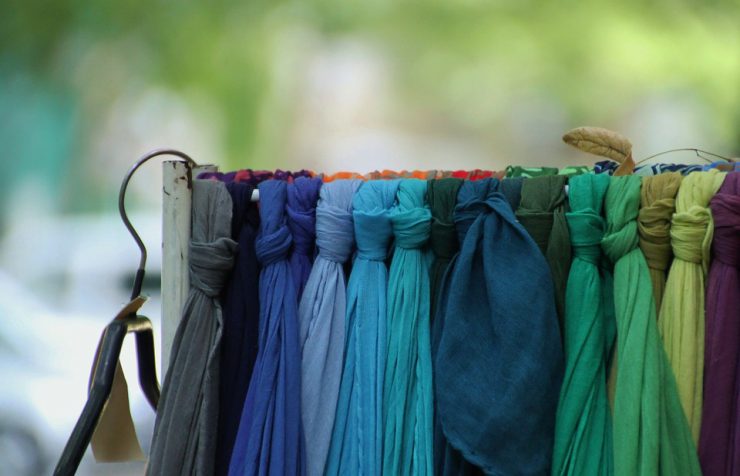Currently, more than 60% of fabrics are made of polyester and other petroleum-derived fibres in Italy. Often, synthetic clothing is affordable clothing. Natural fibres have been replaced by disposable fashion for reasons related to fashion and cost. It shouldn’t be a luxury to be environmentally conscious.Consumers are now starting to demand for a more sustainable textile production and consumption, mainly for health reason and for the environment protection. Businesses are looking for bio-based alternatives to fossil-based fabric that are economically viable. What are the challenges and opportunities to design the textile industry based on the innovations stemming from the circular bioeconomy?
To answer these questions BIOVOICES and Biobridges projects organized on the 9th of April 2019 a workshop, in Biella (Piedmont, Italy), to understand how the bioeconomy could add value to the textile industry. The workshop involved 76 participants, out of which 7 from the public sector, 37 from the private sector, 7 consumers and 25 researchers.
The Biella textile district
Biella is known worldwide for making yarns, having deep roots of a long wool tradition with 200 years of history. The specialised products of the district, include yarns and fabrics of the highest quality, made from mainly Australian superfine wools and other special materials and precious fibres (such as cashmere, camel hair, alpaca, vicuña and mohair. The district also specialized in cotton, polyester, acrylic and nylon (source http://www.uknitlab.com/blog/biella-textile-district/).
Opportunities and barriers to the introduction of a more sustainable textile value chain, integrating bio-based products.
There are a wide range of concrete possibilities created by the circular bioeconomy for the textile industry, as an example through the valorisation of agro-food waste and processing residues, like fibres made from pineapple, tomato, coffee, grapes, hemp, hazelnut and rice scraps The potential exploitation of bio-based products and processes in Biella textile sector seems to be more likely applicable to changing processes than using alternative feedstock to produce innovative yarns and fabrics. Today in Italy we have the possibility (still in a few shops) to buy sustainable textiles of renewable and natural origin such as hemp and bamboo,. We have also excellences in the Italian textile bioeconomy, famous world-wide, as “Orange Fibers” that have patented and manufactured the first sustainable fabric from citrus juice by-products or “Due di Latte” which created two series of milk , to create a series of soft T-shirts and clothing lines. New processes can be yarn and fabric dyeing and finishing, as well as better waste waters treatment to create a better life cycle.
A main reason for resistance to change is linked to high-end market positioning of the main industrial players in Biella. This position requires high standards in terms of quality and durability, which should be carefully evaluated and tested when suppliers are proposing new solutions, including the bio-based. The traditional safe products and supply chain already guarantee these high standards and therefore the industries participating to the workshop were not completely open to novelties.
The role of consumers in driving the change.
Consumers are interested in companies’ green strategies as claimed by the workshop’s participants. They foresee a market demand for bio-based products and sustainable textile processes. According to them, consumers have become more aware of where their clothing comes from and how they are made. Therefore, they prefer more often companies caring for their workers, the consumer’s health and the environment.
Nevertheless only few consumers are informed about the impact of fossil based fabric on humans and the environment. The use of a terminology that everyone can understand is crucial. The participants foresee a need to identify and to set-up correct and clear communication messages for the consumer to verify the sustainability of what they are buying. Labelling should be more explicative, clear and reliable. As an example, some participants claimed for “digital” labels, providing much more information on processes, value chains, related Life Cycle Assessment (LCA) and impacts on society and environment, compared to the actual information that is not sufficient to drive an informed choice. Despite the interest of consumers in companies’ green strategies, fashion remains the main purchase motivation, rather than quality or sustainability.
Collaboration along the value chain players
The current challenges along the value chain involve all actors, from feedstock producers, to bio-based industries, from retailers and brands to consumers. The workshop emphasised the need to facilitate and support the collaboration among the players along the textile value chain to jointly address challenges.
Susanna Albertini & Michela Cohen, FVA New Media Research

